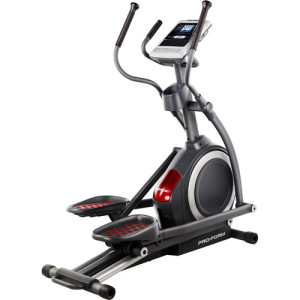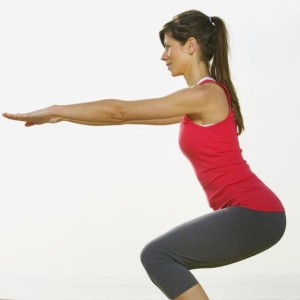The elliptical machine is one of the most common gym equipment in the world. Whether you attend LA Fitness or Gold’s Gym you would surely spot the elliptical machine alongside other gym equipment like the treadmill.
If you are a gym newbie, you might have this conception that using an elliptical machine is simple. After all, you see other people working out in an elliptical machine. You figure that you simply have to hold on to the handle bars and pedal your way to a 10 or 15-minute exercise, right?
Although elliptical machines are actually easy to use, there are still some things that you might want to know about this gym equipment like how you can target certain parts of the body using this trainer. You may also want to know more about the safety features of elliptical machines so that you can enjoy a safe workout.
Common Features
 The elliptical trainer is considered a good machine not just for the lower body but also for the upper torso. As such, most elliptical trainers have arm handles for upper body work out. Handles are not only there for upper body workout, but also to support your body when you use the elliptical machine. When holding the handles, make sure that you have a light grip.
The elliptical trainer is considered a good machine not just for the lower body but also for the upper torso. As such, most elliptical trainers have arm handles for upper body work out. Handles are not only there for upper body workout, but also to support your body when you use the elliptical machine. When holding the handles, make sure that you have a light grip.
Elliptical machines vary in stride length. Some models have as short as 14 inch stride length while others have 21 inch stride length. You would want to use an elliptical trainer that suits your height. Using one with stride length that is too short could force your legs to move in an uncomfortable way. On the other hand, using an elliptical machine with a stride length too long for you could extend your leg muscles and perhaps lead to injuries.
Likewise, contemporary elliptical machines have adjustable incline and resistance levels to add intensity to your exercises.
When you use the elliptical machine, you need to maintain the right form so that you can reap more health benefits. Avoid leaning as it could make the elliptical machine less effective in burning fats. Crouching can also strain your back and shoulders. Instead, keep your head up when using the elliptical trainer with the shoulders pulled back.
Proper Use
 Don’t get too excited in using the elliptical trainer for the first time. Start slowly. Increase your RPM or revolution per minute or stride per minute (SPM) once your body gets accustomed to the machine. Slow down the very moment that your feet are coming off the pedals. Putting too much speed will also reduce the fat-burning effects of the trainer on your body.
Don’t get too excited in using the elliptical trainer for the first time. Start slowly. Increase your RPM or revolution per minute or stride per minute (SPM) once your body gets accustomed to the machine. Slow down the very moment that your feet are coming off the pedals. Putting too much speed will also reduce the fat-burning effects of the trainer on your body.
What makes the elliptical trainer very popular is its versatility. You can use it for cardio workout, strengthening the lower body, or working out the upper body.
If you want to improve your cardiovascular endurance using the elliptical, then you must maintain around 150 strides or revolution per minute. Most modern elliptical machines would indicate SPM or RPM on their monitor.
Targeting Body Muscles
 The elliptical trainer can target muscles of the lower torso like the quadriceps, hamstrings, and lower shin. For instance, if you want to have a more prominent butt you can increase the incline of the trainer and use it regularly. If it is the quadriceps you are targeting, you must increase the intensity of your workout.
The elliptical trainer can target muscles of the lower torso like the quadriceps, hamstrings, and lower shin. For instance, if you want to have a more prominent butt you can increase the incline of the trainer and use it regularly. If it is the quadriceps you are targeting, you must increase the intensity of your workout.
You can also target the hamstrings or the back of the thighs by pedaling in reverse. There are some elliptical trainers that simulate hill climbing which puts a lot more emphasis on that part of the thighs. You can likewise strengthen your calves by holding on to the handle bar and pushing your legs even further. You could alternate between backward and forward motion or just move the pedals backward.
The elliptical can also be utilized to strengthen your core muscles, or those found in the hips, abdomen, and lower back. Strengthening of the core muscles can improve your posture and balance. The key to targeting the core muscles using an elliptical is to letting go of the handle bars, but you should not sway from side to side when you do this.
Instead of using the handles, pump your arms as if you were running. An alternative is to place your hands on your hips so that you can avoid your hips from moving from left to right. Your hips should not move during the workout in order to tighten your cores. You could also transfer your weight from the heels to the toes.
To a lesser degree, the elliptical trainer can also target the upper body muscles like the chest, upper arms, biceps, and deep core muscles. Given its versatility and the availability of numerous functions, it is not hard to understand why the elliptical trainer is one of the more common gym equipment today.
